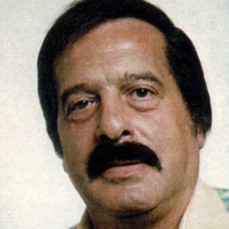
1928 - 1994
Gregory Scarpa Sr.
Summary
Name:
Nickname:
The Grim Reaper / The Mad HatterYears Active:
1950 - 1992Birth:
May 08, 1928Status:
DeceasedClass:
MurdererVictims:
3Method:
ShootingDeath:
June 04, 1994Nationality:
USA
1928 - 1994
Gregory Scarpa Sr.
Summary: Murderer
Name:
Gregory Scarpa Sr.Nickname:
The Grim Reaper / The Mad HatterStatus:
DeceasedVictims:
3Method:
ShootingNationality:
USABirth:
May 08, 1928Death:
June 04, 1994Years Active:
1950 - 1992Date Convicted:
May 6, 1993bio
Gregory Scarpa Sr. was born on May 8, 1928 in New York City to Italian immigrants from the village of Lorenzaga near Treviso, Italy. He grew up during the Great Depression in the gritty neighborhood of Bensonhurst, Brooklyn, where as a child he helped his father deliver coal. Introduced to the Colombo crime family potentially by his older brother Salvatore Jr., Scarpa rose through the ranks in the 1950s to become a feared caporegime and enforcer.
Scarpa was a man of flamboyance who was well-dressed, confident, and notoriously well-funded. He often carried $5,000 in cash to smooth over favors or bribes and had access to multiple residences, including a sleek Sutton Place apartment in Manhattan and homes in Brooklyn, Staten Island, Las Vegas, and Florida. His nicknames, “The Grim Reaper” and “The Mad Hatter”, weren’t just for show; Scarpa’s chilling signature involved leaving the number 666 on victims’ pagers after hits.
Despite his criminal reputation, Scarpa had a secret arrangement with the U.S. government. In 1962, after being arrested for armed robbery, he became an informant for the FBI in exchange for leniency. Over the next three decades, Scarpa would provide federal agents with insider intelligence on the Colombo family and its internal operations
murder story
In the summer of 1964, the FBI faced a desperate challenge in locating the bodies of civil rights activists James Chaney, Andrew Goodman, and Michael Schwerner, who had been brutally murdered in Mississippi. The Bureau, unable to crack the local Ku Klux Klan’s tight silence, turned to an unlikely and dangerous ally: Colombo hitman Gregory Scarpa Sr. Though the FBI has never officially confirmed his role, court testimony and accounts from mob insiders indicate that Scarpa was sent in by agents to help unearth the burial sites of the activists. According to Linda Schiro and other close associates, Scarpa and an FBI agent abducted Klansman Lawrence Byrd from his TV store in Laurel. At Camp Shelby, Scarpa reportedly beat Byrd mercilessly and pressed a gun barrel down his throat until he revealed where the bodies lay.
Two years later, Scarpa was again deployed by the Bureau, this time to assist in the investigation of the arson-murder of civil rights supporter Vernon Dahmer by Klansmen. His help earned him grudging FBI acceptance, at least for a while. Though Scarpa's methods were extralegal, they arguably played roles in solving gangland-scale crimes that might have otherwise gone cold. Eventually, the relationship cooled, and by 1975 the Bureau officially dropped him as a confidential informant.
On November 18, 1991, Orena's faction launched a brazen attack on Scarpa and his family while they were driving which was an attempt that nearly claimed their lives but ultimately failed. Undeterred, Scarpa retaliated swiftly, allegedly orchestrating the murders of multiple Orena allies, including Genovese soldier Thomas Amato. In a grim testament to his ruthlessness, he is said to have shot Vincent Fusaro in the neck as Fusaro was hanging Christmas lights at his home.
In 1986, Scarpa’s health had deteriorated sharply—he had contracted HIV, lost an eye in a gunfight, and endured stomach surgery. Yet even weakened, he remained lethal. During the Colombo internal war (1991–1993), Scarpa drove the streets of Brooklyn in search of Victor Orena loyalists, allegedly shooting a man hanging Christmas lights and marking the kill by paging his consigliere with the diabolical code “666.” In total, he’s credited with four murders and multiple assaults during the seven-month conflict.
When a shootout in December 1992 led to him losing an eye, Scarpa was placed under house arrest. On May 6, 1993, he pleaded guilty to three murders and conspiracy to commit additional crimes. By December, he received a life sentence, later commuted due to poor health arrested for weapons violations and racketeering.
Scarpa died of AIDS-related complications at the Federal Medical Center in Rochester, Minnesota, on June 4, 1994. After his death, his mistress Linda Schiro and his son Gregory Jr. provided key testimony and evidence about his dual life as both feared mafia killer and covert FBI collaborator.